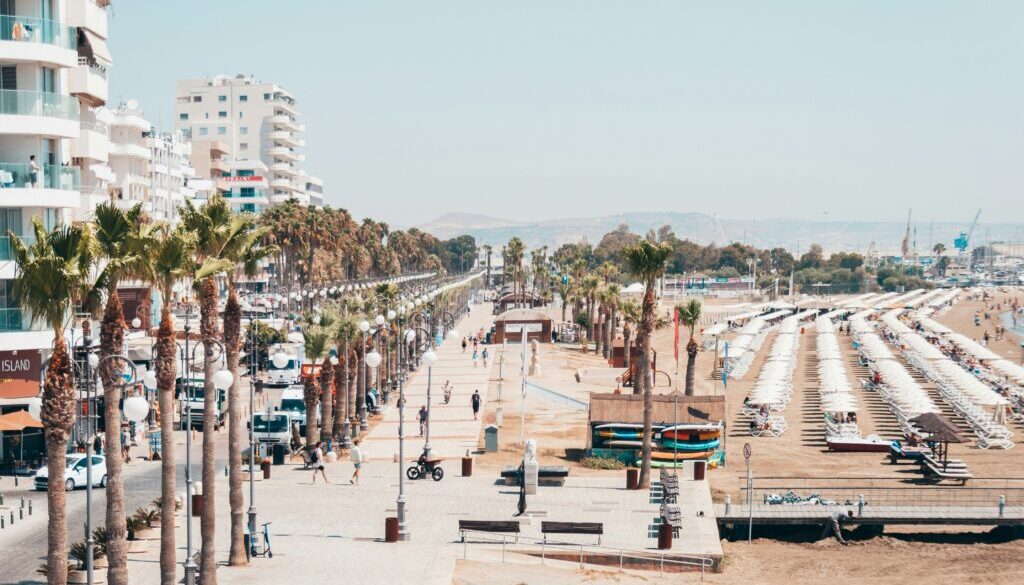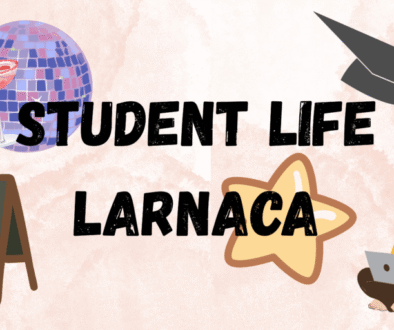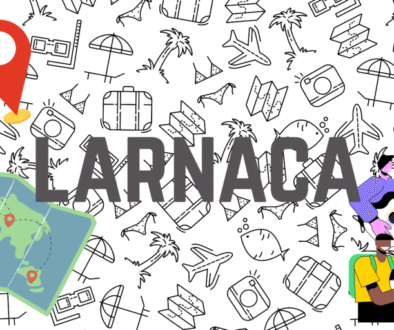The History of Larnaca
Settled on Cyprus’s southern coast, Larnaca, once known as Kition, is among the island’s oldest and most continually occupied settlements with a wealthy history crossing nearly 6,000 years.
Legend credits Khittim, the grandson of Noah, who is assumed to have established the primary settlement here circa the 40th century BC, with the foundation of Larnaca.
Since several burial sites were found in Kition villages, the name Larnaca was given from the Ancient Greek noun “larnax,” meaning coffin. The city is additionally colloquially known as “Skala” from the Greek noun, meaning ladder. Historically, this name was utilized to portray the city’s harbour district, which was a major centre for trade and commerce, especially amid the Ottoman period. Over time, “Skala” came to be used more broadly by local people to refer not just to the harbour or its immediate neighborhood, but to Larnaca as a whole.
Notable Historical Places in Larnaca
Church of Saint Lazarus
One of the most cherished sites in Larnaca is the Church of Saint Lazarus, which was built in the 9th century and is a wonderful example of Byzantine architecture. In Christian tradition, Lazarus of Bethany, who got to be the primary bishop of Kition after being resurrected by Jesus, is said to have been buried there.
Ancient Kition
Ancient Kition was a noteworthy city-kingdom and Phoenician colony that goes back to the 13th century BC.. Visitors can explore the remains of ancient sanctuaries, city walls, and artifacts that provide insight into Larnaca’s early urban and religious life.
Larnaca Fort
Overlooking the Finikoudes Promenade, Larnaca Fort was initially built in the Byzantine period and later rebuilt by the Ottomans in the 17th century. The fort has served different purposes over the centuries, including as a defensive structure, a prison, and a police station. Nowadays, it houses a museum with artifacts from Larnaca’s medieval and Ottoman periods and offers panoramic views of the ocean.
Kamares Aqueduct
Built in 1747, the Kamares Aqueduct is an exceptional example of Ottoman engineering, highlighting 75 stone arches. The aqueduct provided water to Larnaca for nearly two centuries and remains an impressive architectural landmark just outside the city.
Hala Sultan Tekke
Found on the west bank of Larnaca Salt Lake, Hala Sultan Tekke is an vital Muslim sanctum built within the late 18th century. It is believed to house the tomb of Umm Haram, a companion of the Prophet Muhammad. The mosque, mausoleum, and peaceful gardens make it both a spiritual center and a notable historical location.
Panagia Angeloktisti Church
Found in the nearby town of Kiti, this church is famous for its early Byzantine architecture and a shocking 6th-century mosaic of the Virgin Mary. It is one of the finest examples of early Christian craftsmanship in Cyprus.
Choirokoitia
In spite of the fact that it is slightly outside Larnaca, the Neolithic settlement of Choirokoitia is a UNESCO World Heritage Site and one of the best-preserved ancient sites in the eastern Mediterranean, dating back to 7000 BC.
Photo by: Hert Niks




